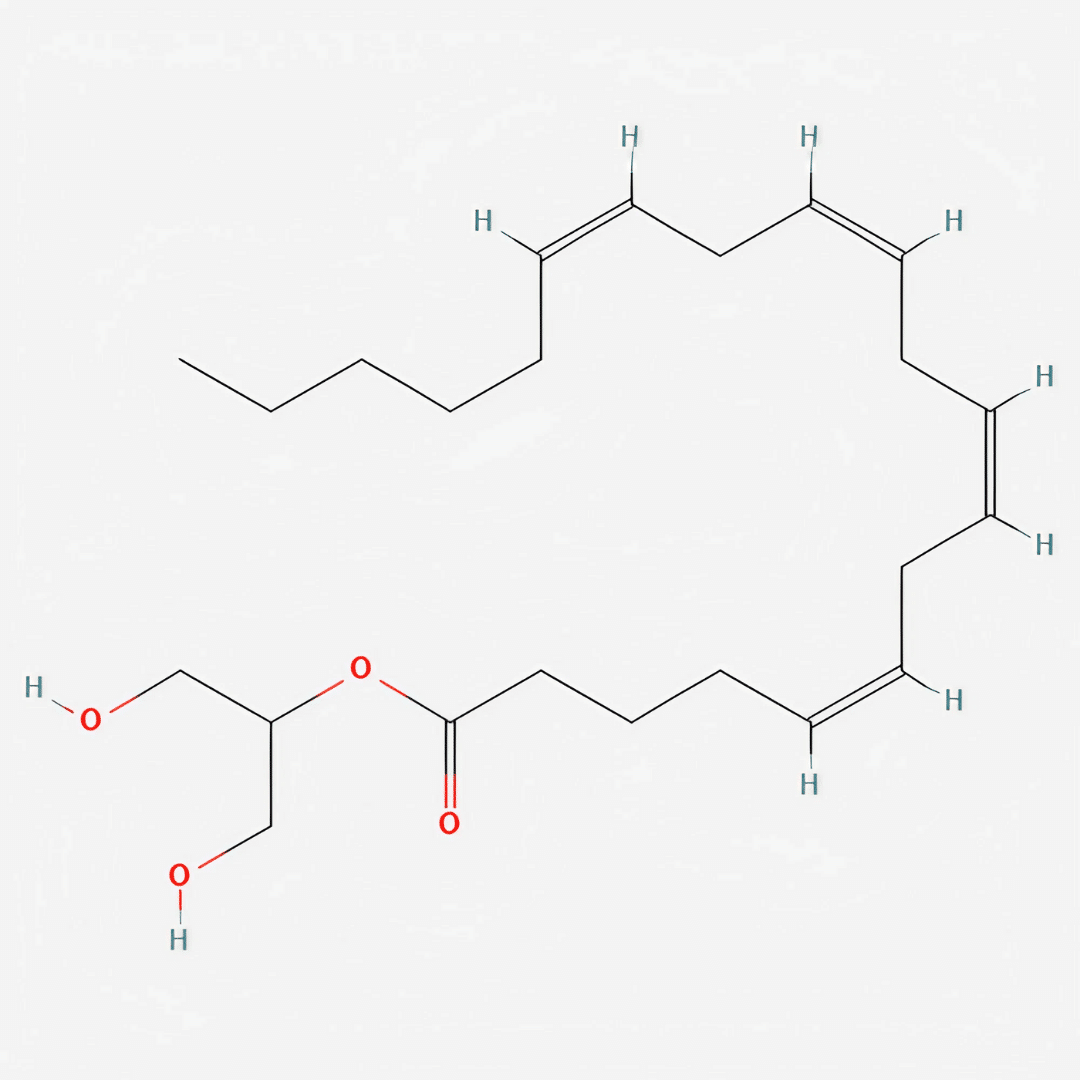Unlocking the Synergistic Potential: Exploring the Connection Between 2-Arachidonoylglycerol and CBD
Written by Trevor

Introduction: Understanding 2-Arachidonoylglycerol (2-AG) and CBD
In recent years, there has been a growing interest in the therapeutic potential of cannabinoids such as CBD (cannabidiol) and their interaction with the human body’s endocannabinoid system. Among these cannabinoids, 2-arachidonoylglycerol (2-AG) has emerged as a key player in regulating various physiological processes.
2-AG is an endocannabinoid, meaning it is produced naturally within the body. It acts as a signaling molecule that binds to cannabinoid receptors, particularly CB1 and CB2 receptors, which are found throughout the central nervous system and peripheral tissues. This interaction helps to maintain balance and homeostasis within the body.
CBD, on the other hand, is a non-intoxicating compound derived from the cannabis plant. It has gained significant attention for its potential therapeutic effects without causing psychoactive effects commonly associated with THC (tetrahydrocannabinol).
Understanding how 2-AG and CBD interact with the endocannabinoid system can provide valuable insights into their potential benefits for various health conditions. In this section, we will explore the mechanisms of action of 2-AG and CBD, their roles in modulating physiological processes, and their potential therapeutic applications.
By delving into these topics, we can gain a more in-depth understanding of how these compounds work within our bodies and how they may offer promising avenues for future research and development of novel treatments. So, let’s dive in and explore the fascinating world of 2-arachidonoylglycerol (2-AG) and CBD!
The Science Behind 2-AG: How it Interacts with the Endocannabinoid System
The endocannabinoid system is a complex network within our bodies that plays a crucial role in maintaining balance and homeostasis. At the heart of this system lies a fascinating molecule called 2-arachidonoylglycerol, or 2-AG for short. Understanding the science behind 2-AG and how it interacts with the endocannabinoid system can shed light on its profound effects on our health and well-being.
Cannabinoid receptors, specifically CB1 and CB2 receptors, are key players in the endocannabinoid system. These receptors are found throughout our bodies, from our brain to our immune cells. When activated by cannabinoids like 2-AG, they initiate various physiological responses that help regulate pain, inflammation, mood, appetite, and more.
What makes 2-AG unique is its classification as a lipid signaling molecule. It belongs to a class of compounds known as endocannabinoids, which are naturally produced by our bodies. When there is an imbalance or disruption in our body’s internal environment, such as pain or inflammation, 2-AG is synthesized on-demand to bind with cannabinoid receptors and restore equilibrium.
The interplay between 2-AG and the endocannabinoid system goes beyond just maintaining balance. Research suggests that this lipid signaling molecule also plays a role in neuroprotection, immune response modulation, and even influencing memory formation.
By delving into the science behind 2-AG and its interaction with the endocannabinoid system, we gain valuable insights into how this intricate network operates to support overall wellness. As further research unfolds in this field of study, we may uncover new therapeutic avenues for harnessing the potential benefits of cannabinoids like 2-AG for various health conditions.
CBD and its Effects on the Endocannabinoid System: An Overview
Potential Benefits
CBD, short for cannabidiol, has gained significant attention in recent years due to its potential therapeutic benefits. One area of interest is its effects on the endocannabinoid system (ECS), a complex network of receptors and neurotransmitters that plays a crucial role in maintaining balance within the body.
When consumed, CBD interacts with the ECS in various ways, influencing its functioning and potentially producing beneficial effects. Research suggests that CBD can modulate the activity of cannabinoid receptors found throughout the body, including CB1 and CB2 receptors. By doing so, it may help regulate functions such as pain perception, immune response, mood regulation, and sleep patterns.
Furthermore, CBD has been shown to inhibit an enzyme called FAAH (fatty acid amide hydrolase), which breaks down anandamide – a naturally occurring cannabinoid in our bodies. By inhibiting FAAH, CBD may increase levels of anandamide in the brain and body, leading to enhanced feelings of well-being and relaxation.
Additionally, CBD has been found to interact with other non-cannabinoid receptors involved in pain modulation and inflammation reduction. This suggests that its effects on the ECS are not limited to cannabinoid receptors alone.
Promising Results
While research on CBD’s effects on the ECS is still ongoing, preliminary studies have shown promising results. Many individuals have reported experiencing relief from symptoms such as chronic pain, anxiety disorders, epilepsy seizures, and sleep disturbances after using CBD products.
It is important to note that individual responses to CBD can vary based on factors such as dosage, product quality, and personal physiology. Consult with a healthcare professional before using CBD.
In conclusion, CBD’s interaction with the endocannabinoid system offers exciting possibilities for therapeutic applications. As research continues to unfold regarding its benefits and mechanisms of action within the ECS framework; it becomes increasingly evident that this natural compound holds great potential for improving overall well-being.
Synergistic Potential: Exploring the Relationship Between 2-AG and CBD
The relationship between 2-AG and CBD holds immense potential in the world of cannabinoid research. By understanding the interaction between these two compounds, we can unlock the synergistic effects that can enhance the therapeutic properties of CBD.
One of the key concepts at play here is the entourage effect of cannabinoids. This refers to how different cannabinoids work together to produce a more profound effect than when used individually. When 2-AG and CBD interact, they have been found to amplify each other’s benefits, leading to a more comprehensive and effective therapeutic experience.
By combining 2-AG with CBD, researchers are exploring new avenues for treating various conditions such as chronic pain, inflammation, anxiety, and neurodegenerative disorders. The enhanced synergy between these compounds has shown promising results in preclinical studies.
Furthermore, this relationship opens up possibilities for developing targeted therapies tailored to individual needs. By understanding how 2-AG and CBD interact on a molecular level, scientists can potentially create customized cannabinoid formulations that optimize their combined therapeutic potential.
In conclusion, exploring the relationship between 2-AG and CBD offers exciting prospects for unlocking the full potential of cannabinoids in healthcare. The entourage effect created by these compounds working together has the potential to revolutionize therapeutic approaches and provide individuals with enhanced relief and well-being.
Potential Applications in Medicine and Wellness: The Combined Benefits of 2-AG and CBD
In the realm of medicine and wellness, the combined benefits of 2-AG and CBD hold immense potential. Both compounds have been extensively studied for their various medical applications, including pain management, inflammation reduction, and anxiety and stress relief.
When it comes to pain management, CBD has shown promising results in alleviating chronic pain conditions such as arthritis and neuropathic pain. Its anti-inflammatory properties help reduce swelling and discomfort, providing much-needed relief to patients.
2-AG, on the other hand, is an endocannabinoid naturally produced by our bodies. It plays a crucial role in regulating immune responses and reducing inflammation. When combined with CBD, the synergistic effect can further enhance its anti-inflammatory properties, offering a more comprehensive approach to managing inflammation-related conditions.
Anxiety and stress are prevalent issues in today’s fast-paced world. Both CBD and 2-AG have demonstrated potential in reducing anxiety symptoms by interacting with our body’s endocannabinoid system. By modulating neurotransmitter activity in the brain, these compounds can promote relaxation and a sense of calmness without causing sedation or addiction.
Furthermore, research suggests that CBD may influence serotonin receptors in the brain, which play a vital role in mood regulation. This interaction may contribute to its anxiolytic effects.
In summary, the combined benefits of 2-AG and CBD present exciting possibilities for medical applications in pain management, inflammation reduction, as well as anxiety and stress relief. As further research unfolds into these compounds’ potential therapeutic uses, we can expect to witness innovative approaches towards achieving optimal health and well-being.
The Future of Research: Unraveling the Full Potential of the 2-Arachidonoylglycerol and CBD Connection
The interaction between 2-Arachidonoylglycerol and CBD has garnered significant attention in the field of research, holding immense potential for various applications. However, to fully comprehend this connection and unlock its true potential, further studies are needed.
While initial research has provided valuable insights into the effects of 2-Arachidonoylglycerol and CBD interaction, there is still much to uncover. Comprehensive studies are required to delve deeper into the mechanisms behind this interaction, exploring its impact on various physiological processes and potential therapeutic applications.
By conducting further research, scientists can gain a more comprehensive understanding of how 2-Arachidonoylglycerol and CBD interact at a molecular level. This knowledge could pave the way for innovative treatments targeting conditions such as chronic pain, inflammation, anxiety disorders, and neurodegenerative diseases.
Moreover, unraveling the full potential of the 2-Arachidonoylglycerol and CBD connection could lead to advancements in drug development and personalized medicine. With a deeper understanding of these compounds’ synergistic effects, researchers may be able to optimize dosages and formulations for enhanced therapeutic outcomes.
In conclusion, while we have made significant strides in understanding the interaction between 2-Arachidonoylglycerol and CBD, there is still much more to discover. Further studies are essential to unlock the full potential of this connection and harness its benefits for improving human health and well-being.
Conclusion: Harnessing the Power of Synergy with 2-Arachidonoylglycerol (2-AG) and CBD
The Dynamic Duo
In conclusion, the combination of 2-arachidonoylglycerol (2-AG) and CBD presents a powerful synergy that can be harnessed to enhance the benefits of cannabinoids on the endocannabinoid system. By understanding how these compounds interact with our body’s natural receptors, we can unlock their full potential for promoting balance and wellness.
2-AG, as an endocannabinoid produced by our own bodies, plays a crucial role in regulating various physiological processes such as pain perception, immune response, and mood regulation. CBD, on the other hand, is a phytocannabinoid derived from cannabis plants that has gained significant attention for its therapeutic properties.
When used together, 2-AG and CBD work in harmony to modulate the endocannabinoid system. They can enhance each other’s effects and provide a more comprehensive approach to addressing health concerns. Whether it is managing chronic pain, reducing inflammation, or alleviating anxiety and stress, this dynamic duo offers a promising solution.
Furthermore, harnessing the power of synergy between 2-AG and CBD opens up new possibilities for developing targeted therapies that can be tailored to individual needs. By understanding how these compounds interact with specific receptors within the endocannabinoid system, researchers can potentially create personalized treatment plans that optimize outcomes.
A Promising Future
As research into cannabinoids continues to evolve, it is clear that there is much more to learn about their synergistic effects. However, the existing evidence suggests that combining 2-AG and CBD holds great promise for unlocking the full potential of cannabinoids in promoting overall well-being.
In conclusion, by harnessing the power of synergy between 2-AG and CBD, we have an opportunity to tap into nature’s medicine cabinet and improve our quality of life through enhanced support for our body’s own regulatory systems. As we continue to explore this fascinating field of study, it is crucial to prioritize further research and collaboration to fully understand and utilize the potential of this powerful combination.
Enjoy This Article?
If you enjoyed this article and want to check out our Instagram page for a better look at all products. Sign up for our newsletter and follow our Twitter Page for a more posts like this and exclusive deals








